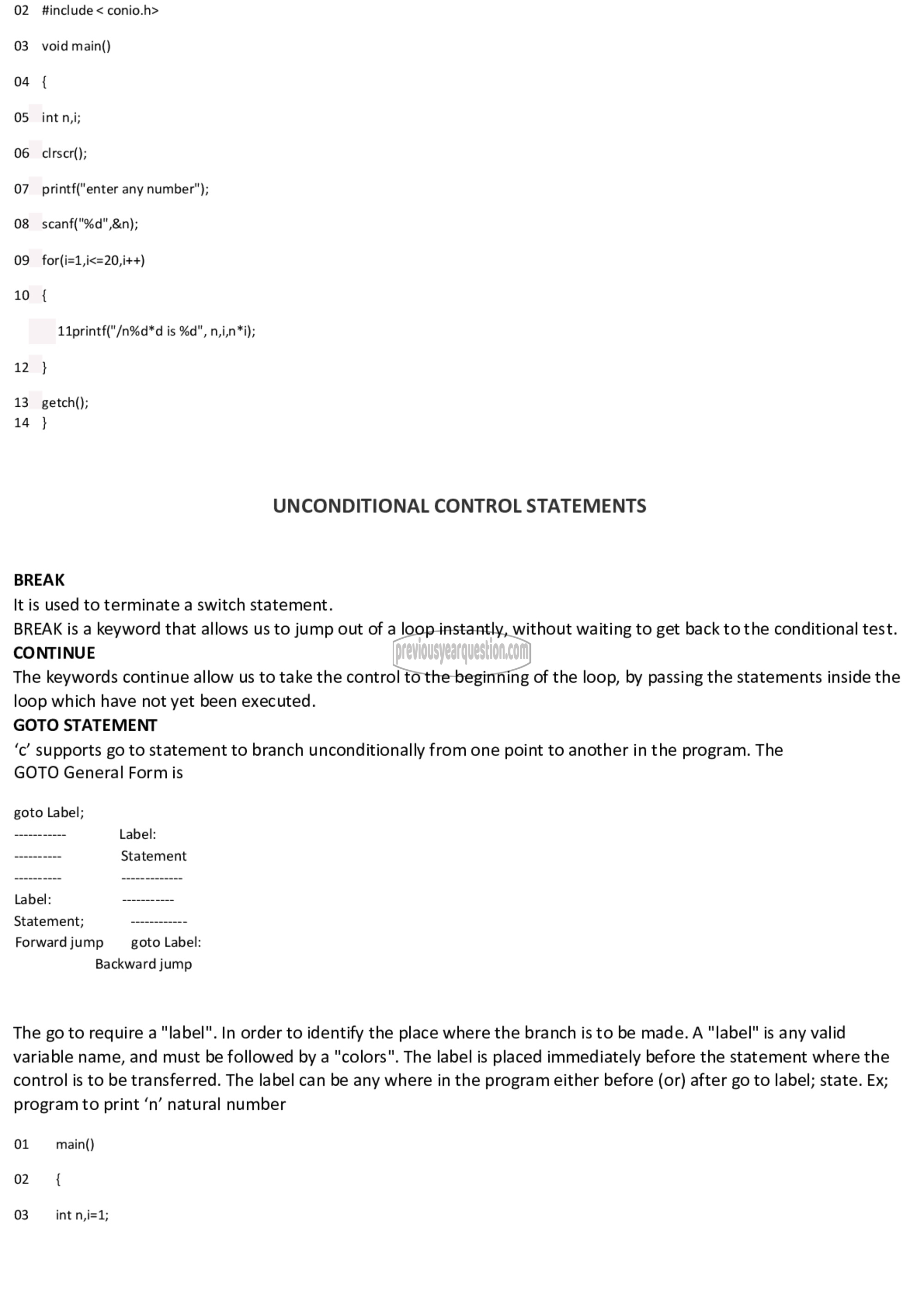APJ ABDUL KALAM TECHNOLOGICAL UNIVERSITY Previous Years Question Paper & Answer
Semester : S1 and S2
Subject : Computer Programming
Year : 2017
Term : DECEMBER
Branch : BIOTECHNOLOGY
Scheme : 2015 Full Time
Course Code : CS 100
Page:15
02 #include > conio.h>
03 void main()
04 {
05 int :ارہ
06 0௦1);
07 printf("enter any number");
08 scanf("%d" &n);
09 for(i=1,i<=20,i++)
10 {
11printf("/n%d*d 15 %d", n,i,n*i);
12 }
13 getch();
14 }
UNCONDITIONAL CONTROL STATEMENTS
BREAK
It is used to terminate a switch statement.
BREAK is a keyword that allows us to jump out of a loop instantly, without waiting to get back to the conditional test.
CONTINUE
The keywords continue allow us to take the control to the beginning of the loop, by passing the statements inside the
loop which have not yet been executed.
GOTO STATEMENT
‘c’ supports go to statement to branch unconditionally from one point to another in the program. The
GOTO General Form is
goto Label;
−−−−−−−−−−− Label:
Statement
Label:
Statement; ------------
Forward jump goto Label:
Backward jump
The go to require a "label". In order to identify the place where the branch is to be made. A "label" is any valid
variable name, and must be followed by a "colors". The label is placed immediately before the statement where the
control is to be transferred. The label can be any where in the program either before (or) after go to label; state. Ex;
program to print ‘n’ natural number
01 main()
02 {
03 int n,i=1;
